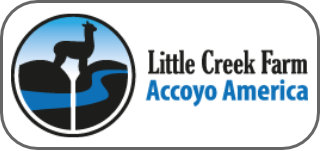Alternative Uses
-
Alpaca (Lama pacos) as a Convenient Source of Recombinant Camelid Heavy Chain Antibodies (VHHs)
Recombinant single domain antibody fragments (VHHs) that derive from the unusual camelid heavy chain only IgG class (HCAbs) have many favourable properties compared with single-chain antibodies prepared from conventional IgG. As a result, VHHs have become widely used as binding reagents and are beginning to show potential as therapeutic agents. To date, the source of VHH genetic material has been camels and llamas despite their large size and limited availability. Here we demonstrate that the smaller, more tractable and widely available alpaca is an excellent source of VHH coding DNA. Alpaca sera IgG consists of about 50% HCAbs, mostly of the short-hinge variety. Sequencing of DNA encoding more than 50 random VHH and hinge domains permitted the design of PCR primers that will amplify virtually all alpaca VHH coding DNAs for phage display library construction. Alpacas were immunized with ovine tumour necrosis factor α (TNFα) and a VHH phage display library was prepared from a lymph node that drains the sites of immunizations and successfully employed in the isolation of VHHs that bind and neutralize ovine TNFα.More » -
Alpaca Immunoglobulins
This report documents the findings on the use of alpaca for producing a therapeutic immunoglobulin product (snake antivenom), for treating snake bite envenomation. Additional research regarding commercialisation opportunities is explored in the report Alpaca immunoglobulins: Phase 2More » -
Alpaca Immunoglobulins: Phase 2
This project explored the production of therapeutic alpaca immunoglobulin products, as an alternative use of alpaca to fibre or meat production. A research herd of alpaca was hyperimmunised with various snake venoms, the immune response monitored and serum harvested for various purposes at different time periods. These results show that alpaca can be used for antivenom production as well as making antibodies for diagnostic tests. However, some barriers exist to full scale commercial production of antivenom using alpaca, including development of more effective antibody extraction methods. The field is open for commercialisation as the patent landscape search revealed no obstructions in Australia. This work is a continuation of research undertaken as part of a previous RIRDC project Alpaca immunoglobulins.More » -
Biochar from Alpaca Manure, The Basics
Waste management has been identified as an ongoing concern for livestock farms. For livestock farms/producers/stables waste management is an important part of the daily operation. Common practice for waste management is to remove and stockpile the waste away from the areas occupied by animals. These stockpiles are known to leach nitrogen (N) and other potentially harmful elements into the soil, and in the end, groundwater.[1] Innovative use of biochar has been proven to reduce N loss from animal waste, enhance the availability of N mineralization in soils, improve and sustain soil quality and fertility, and increase crop growth.[2] Biochar is the product of pyrolysis of a biomass feedstock at elevated temperatures in the absence of oxygen. The small livestock producer needs an alternative to the “stockpile” waste management which can be accomplished with minimal change to the daily farming tasks. Open air burning of the waste is a viable alternative to stockpile management but adds to the quantity of particulates in the air. Use of a biochar reactor to turn farm waste (manure/biomass) into biochar for the addition and enhancement of soil is a reasonable alternative to the stockpiling method.More » -
Camel, Alpaca Antibodies Target Anticancer Viruses Directly to Tumors
Using antibodies from camels and alpacas, scientists at Washington University School of Medicine in St. Louis have found a way to deliver anticancer viruses directly to tumor cells, leaving other types of cells uninfected.More » -
Researchers Produce Alpaca Antibodies Using Yeast
Camelids such as camels, llamas, and alpacas make an unusual class of antibodies with a growing number of applications in biomedical science. But researchers wanting to use those antibodies currently have to go through a lengthy and expensive procedure to extract them, limiting the molecules’ use in the lab. Now, a team of US researchers have devised a way to produce the same antibodies in yeast instead, allowing the molecules to be made and identified quickly and cheaply. The findings were published Monday (February 12) in Nature Structural and Molecular Biology.More » -
Rzeszow University Will Use Alpacas for Rehabilitation of Disabled
Alpacas, South American camelids, will be used for the rehabilitation of children with disabilities in Zootherapy Centre at the University of Information Technology and Management in Rzeszów. For over a year the university has the only alpaca farm in Poland.More »
